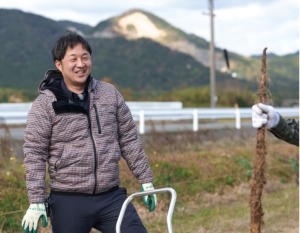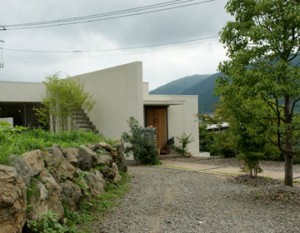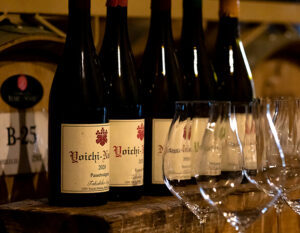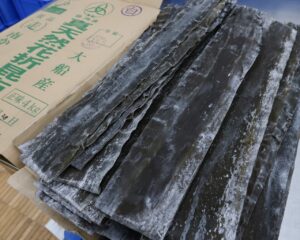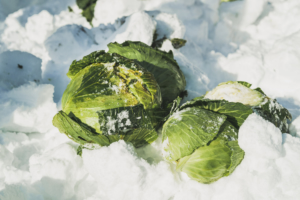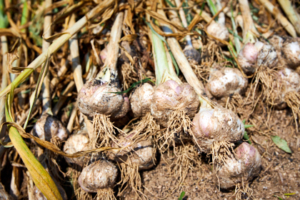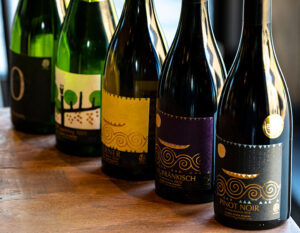There is a farmer in the town of Morimachi in the southern Hokkaido region who produces the exceptionally sweet organic pumpkin “Kuririn. Mr. Seiji Akii of Miyoi Farm, who is a master of organic and pesticide-free farming, is responsible for producing such special pumpkins. The pumpkins are extremely popular among restaurants and confectionery stores, and safety and peace of mind are a given. We asked him about the history of his pumpkin cultivation.
A town rich in food, enjoying the bounty of the sea and mountains
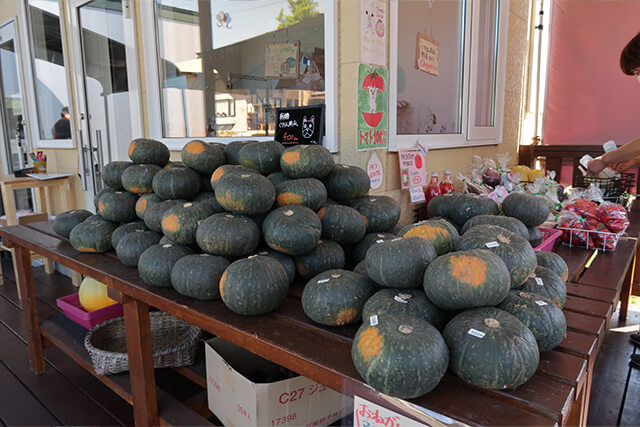
Located about 4 hours from Sapporo and about 1 hour from Hakodate, Morimachi is in an area rich in nature in southern Hokkaido, bordering Uchiura Bay andKomagatake Mountain on theWatashima Peninsula. The town was originally formed through the merger of two towns, Mori-machi and Sunahara-machi, and has been active in agriculture and fishing since ancient times. In the past, many fishermen from the surrounding areas came to the town to work in search of herring, one of the town’s fisheries resources. Today, oyster and scallop farming is also practiced, and along with the local delicacy “ika-meshi” (squid rice), is one of the town’s representative specialties.
Morimachi is also a treasure trove of delicious agricultural products. The town used to be known as a major producer of watermelons and melons, and has also produced rice, beans, and a variety of other agricultural products. The region is also known for its pumpkins, which are the best in the country, and Miyako Pumpkin (Miyako nankin) has earned the title of Japan’s best pumpkin production area. Miyayoi Farm grows “Kuririn,” a pumpkin with thick flesh as sweet as chestnuts. The farm’s acreage is as large as eight times the size of the Tokyo Dome.
Aiming for pesticide-free and organic cultivation from early on
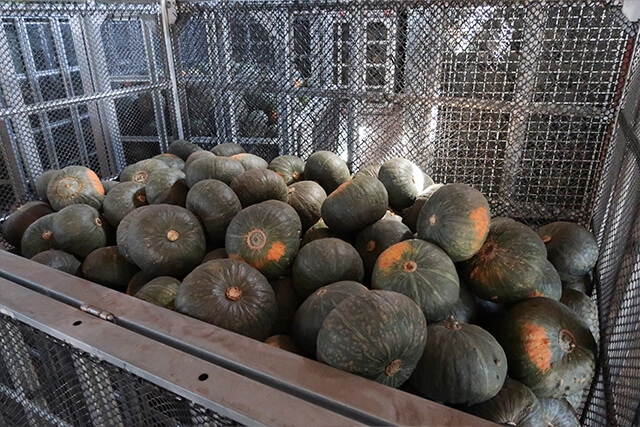
The pumpkin grower at Miyoi Farm is the second generation, Mr. Seiji Akii. He inherited the farm from his father, who had grown watermelons and melons, when he was 20 years old. That was exactly 45 years ago. At that time, the term “organic farming” did not even exist, but he started growingvegetableswithout pesticides in order to “grow safe and secure vegetables that had never been grown before. That was also a history of battles against pests and diseases.
Using chemical fertilizers, which promote crop growth, makes growing vegetables easier, but it also makes them more susceptible to disease. Therefore, Mr. Akai took the plunge and began growing vegetables without chemical fertilizers. Although organic cultivation is now being used by many people due to growing interest in food, he says, “At the time, I could not find any farming methods that could be used as a reference, so I had no choice but to go forward by hand.
Continuing to focus on soil cultivation that makes the most of the ecosystem
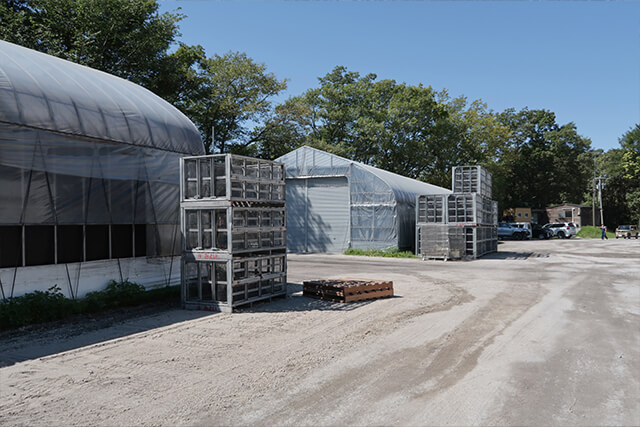
So Mr. Akai flew out to any place where he heard of pesticide-free production. Everywhere he went, he heard the same thing: “Soil preparation” was important. He told me that the only way to produce pesticide-free vegetables was to use cattle manure or chicken manure. However, there was no one who could teach him how to make soil from scratch, and Mr. Akai’s doubts deepened. The town of Mori, where he lives, is rich in nature, even if it is not cultivated. Leaves scattered in the forest fall on the soil, are decomposed by microorganisms, become humus, are stored as nutrients, the trees absorb the nutrients again, and the dissolved minerals flow to the sea. I thought that since there is such a natural cycle in the ecosystem, we should be able to incorporate this cycle into the soil of our fields. Recalling his hometown, Uchiura Bay, also known as Eruption Bay, Mr. Akii thought that minerals were found in the sea, and he came up with the idea of using seaweed and barnacles that adhere to scallop shells when they are cultivated as minerals in the soil of his fields. Through further trial and error, he worked on composting the sea minerals.
Encounter with a new pumpkin “Kuririn
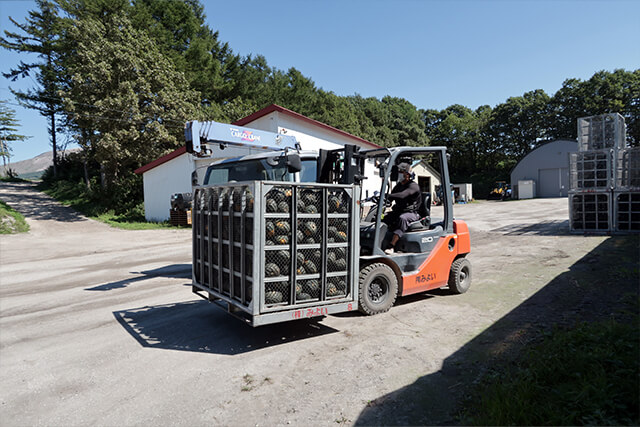
As mentioned earlier, Morimachi, a land of volcanic ash, was a popular area for growing watermelons and melons. However, there was competition from other production areas, and a new crop was needed to stand out from the crowd. The average annual temperature in Morimachi is 7-8℃, and even in February, the coldest month, it is -7℃. The temperature in Moricho is relatively mild, even for Hokkaido, where some places record -15°C in winter, but the temperature difference between day and night is large. The greater the temperature difference between day and night, thesweeter the pumpkins and potatoesbecome, as they quickly convert starch into sugar. Morimachi has always been a good place to grow sweet pumpkins.
Mr. Akii was just as particular about finding the right variety for his fields as he was about cultivating the soil. Miyako pumpkin,” a local specialty, is also a delicious variety, but it requires some ingenuity in cultivation, as the flower stalks change depending on weather conditions. While searching for a pumpkin with added value that could not be found elsewhere, they came across an experimental variety called “Kuririn. It had thick flesh, an appetizing dark yellow color, a hokuhokku taste, and surprising sweetness. Unlike any other variety he had ever seen, Mr. Akai thought, “I want to grow this pumpkin. Since then, in cooperation with a seed company, he has continued to experiment with “Kuririn,” and it now accounts for 100% of the pumpkins produced at his farm.
Ripening Achieves Guinness-Level High Sugar Content
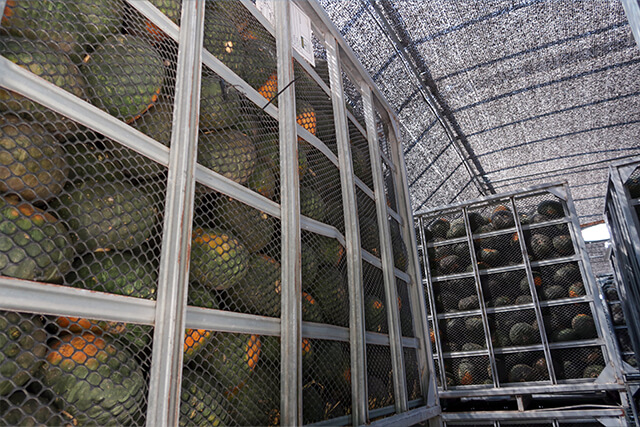
In addition to its vast fields, Miyoshi Plantation also has a ripening and processing plant. In the ripening room, which consists of three plastic greenhouses, the temperature inside the greenhouses is raised up to 50°C to speed up the sugaring process of pumpkins harvested in August and September, creating a cold temperature difference.
The method of storing “overwintering cabbage” and “overwintering potatoes” in Hokkaido is well known as a unique storage method that utilizes the effect of low temperatures to increase the sugar content of the vegetables themselves to protect themselves from freezing. However, since the pumpkins at Miyoshi Farm are not subject to natural temperature differences during the harvest season, the farm has developed a method of ripening pumpkins by creating artificial temperature differences.
Of course, if the starch content of the pumpkin is not high, it will not be sweet, no matter how much it is ripened, so it is up to the growers to produce pumpkins with a high starch content.
Even if the minimum nighttime temperature is 25°C, we can increase the temperature difference by storing the pumpkins in a 50°C ripening room,” says Akii. Two weeks of storage in the ripening room quickly converts starch into sugar and removes moisture, further condensing the sweetness of the kuririn. At the processing plant, pumpkin paste is made after harvest.
According to Mr. Akai, “Kuririn” is not only sweet, but also free of acetic acid, or nitric acid, which causes an astringent taste. Therefore, the sweetness of the pumpkin itself can be enjoyed without the need for flavoring such as cinnamon, which is commonly used in pumpkin sweets. It is understandable why famous confectionery stores across the country all use “Kuririn” from Miyoshi Plantation.
Connecting Pesticide-Free and Organic Cultivation to New Leaders
Food” and “energy” are essential for human life, says Mr. Akii. He also says that abnormal weather conditions such as global droughts are no longer limited to agriculture. In Japan, which relies on imports for most of its food and has a low self-sufficiency rate, even corn, which is used to feed livestock, is currently obtained from overseas. The raw materials for chemical fertilizers also come from overseas,” he said. If this situation continues, it will not just be a matter of raising prices; we will run out of supplies and ‘food’ to eat,” he says, expressing a sense of crisis.
In this sense, Mr. Akai believes that Hokkaido, his hometown, has an important role to play. He is thankful for the natural life that exists in Hokkaido and will continue to struggle to maintain this environment. He also believes that his role is to pass on to future generations sustainable, recycling-oriented farming techniques, such as microbe-assisted soil cultivation, while preserving the natural cycle of nature.
In fact, farmers from all walks of life flock to Mr. Akai for advice. Many of them are thinking about the future of not only pumpkins but also lettuce and asparagus, and many of them are of the younger generation. Young people with no farming experience are especially enthusiastic about research. For example, Hiroki Hasegawa, who runs a pesticide-free, organic asparagus farm in Hiyama County, is a representative of Jet Farm, a farm specializing in asparagus. He has an upright attitude toward learning and a flexible way of thinking, so he quickly absorbs what I teach him. The result is evident in the asparagus he produces. Very tasty asparagus.”
Delivering farm products to the whole country that anyone can eat with peace of mind

The days of simply continuing to grow specialty crops are coming to an end.
The time is coming to an end when it is no longer enough to just continue to grow specialty crops, but to ensure “food safety and security” through organic cultivation and “quality” that is sweeter and tastier than any other variety. Mr. Akai realized the importance of these two points at an early stage, and it can be said that he was truly a man of great foresight.
After more than 30 years of struggling since we started pesticide-free cultivation, we have finally reached the ideal quality of pumpkin,” he says. Once a year, we have Kuririn analyzed by a specialized institution, and our pumpkins have almost no nitrate ions left in them, and their antioxidant power is outstandingly high,” he said.
Nitrate ions exist everywhere in nature and are essential for the growth of vegetables, but when taken into the human body, they change into sulfurous acid, which can cause poisoning symptoms, and it is recommended that infants and the elderly in particular avoid excessive intake. Antioxidant power, as you know, is the ability to inhibit and remove the effects of active oxygen, which can cause fatigue and aging. The data supports that “Kuririn” is not only delicious but also good for the human body.
Consumers’ demands for food safety and security continue to grow,” says Akai.
Organic agriculture that takes into consideration the environment and health will be one of the pillars supporting the future of food in Japan. Mr. Akei, who generously shares his techniques with younger farmers in the hope of providing many people with farm products that not only he but also their loved ones can eat with peace of mind, makes me feel as if I could see a bright future for agriculture in Japan.



